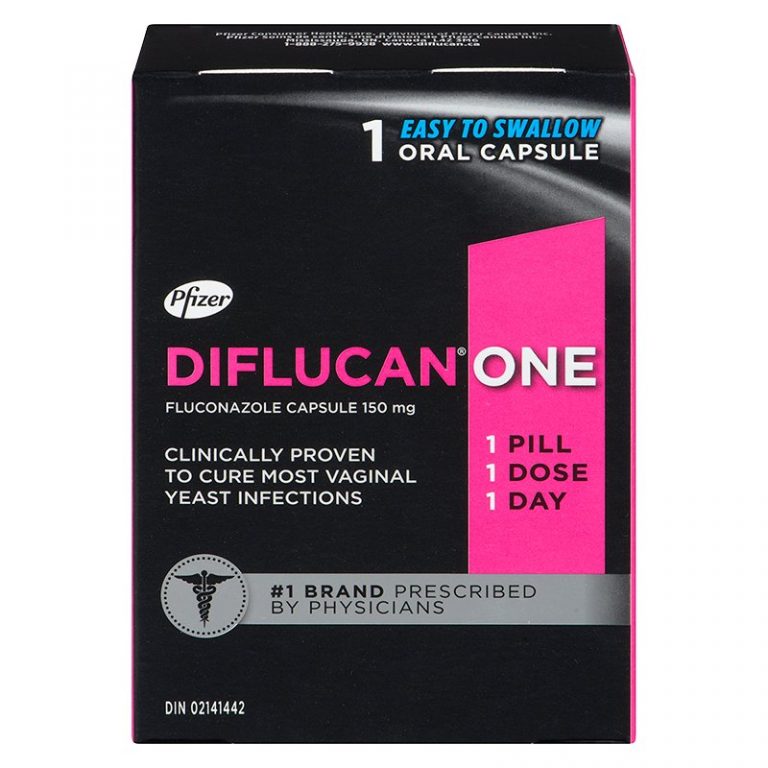Inside. The capsules are swallowed whole.
Therapy can be started pending culture and other laboratory test results. However, antifungal therapy must be modified accordingly when the results of these studies become known.
When transferring a patient from intravenous to oral administration of the drug, or vice versa, no change in the daily dose is required.

The daily dose of the drug Diflucan® depends on the nature and severity of the fungal infection. For infections requiring repeated administration of the drug, treatment should be continued until the disappearance of clinical or laboratory signs of active fungal infection. Patients with AIDS and cryptococcal meningitis or recurrent oropharyngeal candidiasis usually require supportive care to prevent recurrent infection.
Adults
With cryptococcal meningitis and cryptococcal infections of other localization, 400 mg is usually used on the first day, and then treatment is continued at a dose of 200-400 mg 1 time / day. The duration of treatment for cryptococcal infections depends on the clinical and mycological effect; for cryptococcal meningitis, treatment is usually continued for at least 6-8 weeks. In cases of treatment of life-threatening infections, the daily dose can be increased to 800 mg.

To prevent relapse of cryptococcal meningitis in patients with a high risk of relapse, after completing the full course of primary treatment, therapy with Diflucan® at a dose of 200 mg / day can be continued indefinitely.
With coccidioidomycosis, it may be necessary to use the drug at a dose of 200-400 mg / day. For some infections, especially those involving the meninges, a dose of 800 mg / day may be considered. The duration of therapy is determined individually, it can last up to 2 years; with coccidioidomycosis it is 11-24 months, with paracoccidioidomycosis – 2-17 months, with sporotrichosis – 1-16 months, with histoplasmosis – 3-17 months.
For candidemia, disseminated candidiasis and other invasive candidal infections, the saturating dose is 800 mg on the first day, followed by 400 mg / day. The duration of therapy depends on the clinical effectiveness. The general recommendation for duration of treatment for candidemia is 2 weeks after the first negative blood culture result and the disappearance of signs and symptoms of candidemia.
Treatment of mucous candidiasis
With oropharyngeal candidiasis, the saturating dose is 200-400 mg on the first day, the subsequent dose is 100-200 mg 1 time / day for 7-21 days. If necessary, in patients with severe suppression of immune function, treatment can be continued for a longer time. In case of atrophic candidiasis of the oral cavity associated with wearing dentures, the drug is usually used at a dose of 50 mg 1 time / day for 14 days in combination with local antiseptic agents for processing the denture.
In candiduria, the effective dose is usually 200-400 mg / day with a duration of treatment of 7-21 days. In patients with severely impaired immune function, longer periods of therapy can be used.
In chronic mucocutaneous candidiasis, 50-100 mg / day are used for up to 28 days of treatment. Longer periods of therapy may be used depending on the severity of treatment for the infection or concomitant immune system disorder and infection.
In case of esophageal candidiasis, the saturating dose is 200-400 mg on the first day, the subsequent dose is 100-200 mg / day. The course of treatment is 14-30 days (until remission of esophageal candidiasis is achieved). If necessary, in patients with severe suppression of immune function, treatment can be continued for a longer time.
For the prevention of relapses of oropharyngeal candidiasis in HIV-infected patients with a high risk of relapses, the drug is used at 100-200 mg / day or 200 mg 3 times / week. for an indefinite period of time in patients with chronically lowered immunity.
To prevent recurrence of esophageal candidiasis in HIV-infected patients with a high risk of recurrence, the drug is used at 100-200 mg / day or 200 mg 3 times / week. for an indefinite period of time in patients with chronically lowered immunity.
In chronic atrophic candidiasis of the oral cavity associated with the interconnection of dentures, the drug is usually used at a dose of 50 mg 1 time / day for 14 days in combination with local antiseptic agents for processing the denture.
In acute vaginal candidiasis, candidal balanitis, the drug is used once orally at a dose of 150 mg. To reduce the frequency of relapses of vaginal candidiasis, the drug can be used at a dose of 150 mg every three days – only 3 doses (on the 1st, 4th and 7th day), then a maintenance dose of 150 mg 1 time / week. A maintenance dose can be used for up to 6 months.
Treatment of dermatomycosis
For skin infections, including dermatophytosis of the feet, dermatophytosis of the trunk, inguinal dermatophytosis, and for candidal infections, the recommended dose is 150 mg 1 time / week. or 50 mg once a day. The duration of therapy is usually 2-4 weeks, with mycoses of the feet it may be necessary longer therapy up to 6 weeks.
With multi-colored lichen, the recommended dose is 300-400 mg 1 time / week. within 1-3 weeks. An alternative treatment regimen is the use of the drug at 50 mg 1 time / day for 2-4 weeks.
For onychomycosis, the recommended dose is 150 mg once a week. Treatment should be continued until the infected nail is replaced (an uninfected nail grows out). For re-growth of nails on fingers and toes, it usually takes 3-6 months and 6-12 months, respectively. However, the growth rate can vary widely from person to person, and also by age. After successful treatment of persistent chronic infections, nail shape changes are sometimes observed.
For the prevention of candidiasis in patients with malignant tumors, the recommended dose of Diflucan® is 200-400 mg 1 time / day, depending on the degree of risk of developing a fungal infection. For patients with a high risk of generalized infection, for example, with severe or long-term neutropenia, the recommended dose is 400 mg 1 time / day. Diflucan® is used a few days before the expected development of neutropenia, after an increase in the number of neutrophils more than 1000 mm3, the treatment is continued for another 7 days.
Children
As with similar infections in adults, the duration of treatment depends on the clinical and mycological effect. For children, the daily dose of the drug should not exceed that for adults. Diflucan® is used daily 1 time / day.
For candidiasis of the mucous membranes, the recommended dose of Diflucan® is 3 mg / kg 1 time / day. On the first day, in order to more quickly reach the equilibrium concentration, a loading dose of 6 mg / kg / day can be used.
For the treatment of invasive candidiasis and cryptococcal meningitis, the recommended dose is 6-12 mg / kg 1 time / day, depending on the severity of the disease.
To suppress the recurrence of cryptococcal meningitis in children with AIDS, the recommended dose of Diflucan® is 6 mg / kg / day.
For the prevention of fungal infections in children with suppressed immunity, in whom the risk of developing an infection is associated with neutropenia, which develops as a result of cytotoxic chemotherapy or radiation therapy, the drug is used at 3-12 mg / kg 1 time / day, depending on the severity and duration of preservation of induced neutropenia (see dose for adults; for children with renal failure – see dose for patients with renal failure).
If the correct use of the dosage form of the drug Diflucan® in the form of capsules in children is impossible, consideration should be given to replacing it with other dosage forms of the drug (powder for preparation of a suspension for oral administration or solution for intravenous administration) in equivalent doses.
In elderly patients in the absence of signs of renal failure, Diflucan® is used in the usual dose. In patients with renal insufficiency (CC <50 ml / min), the dose of the drug is adjusted as described below.
In patients with renal insufficiency with a single dose, dose changes are not required. In patients (including children) with impaired renal function with repeated use of the drug, a loading dose of 50 mg to 400 mg should be initially administered, after which the daily dose (depending on the indication) is set according to the following table:
Creatinine clearance (ml / min) Percentage of recommended dose
50
?50 (no dialysis)
Hemodialysis 100%
50%
100% after each hemodialysis
Patients on hemodialysis should receive 100% of the recommended dose after each dialysis session. On the day when dialysis is not performed, patients should receive a reduced (depending on creatinine clearance) dose of the drug.
In children with impaired renal function, the daily dose of the drug should be reduced in the same proportional relationship as in adults, in accordance with the severity of renal failure.
diflucan 150
fluconazole 150 mg
fluconazole 200 mg
fluconazole 50mg
diflucan 50 mg
diflucan 400mg

